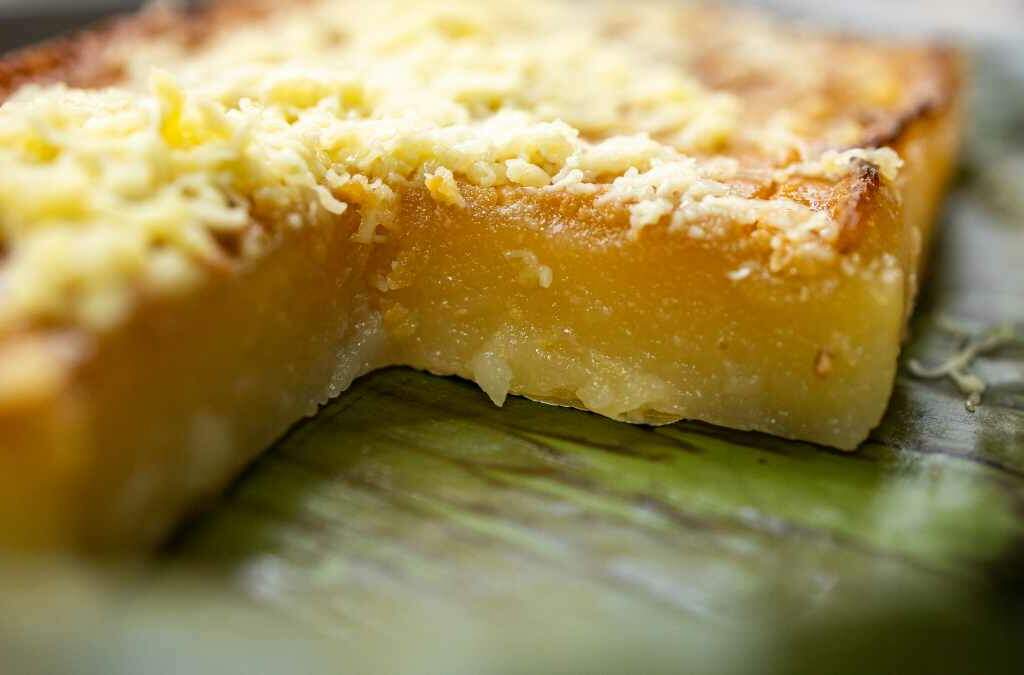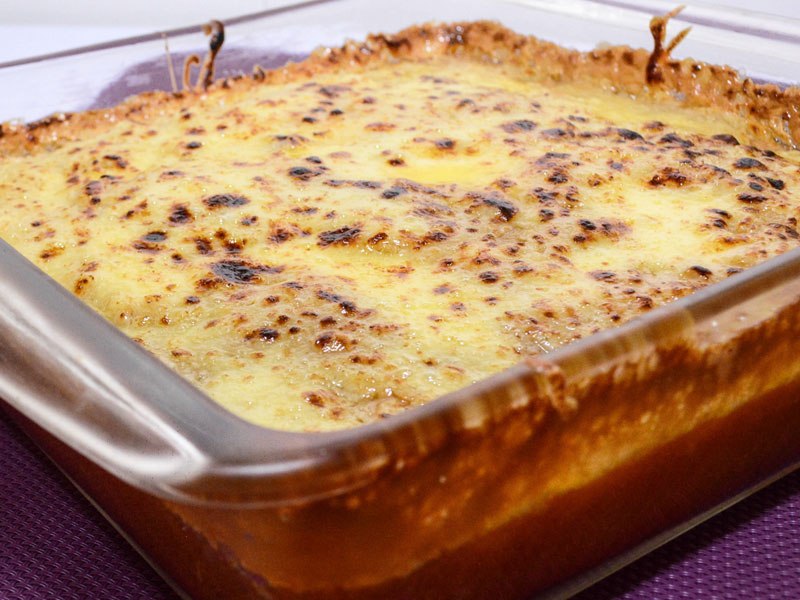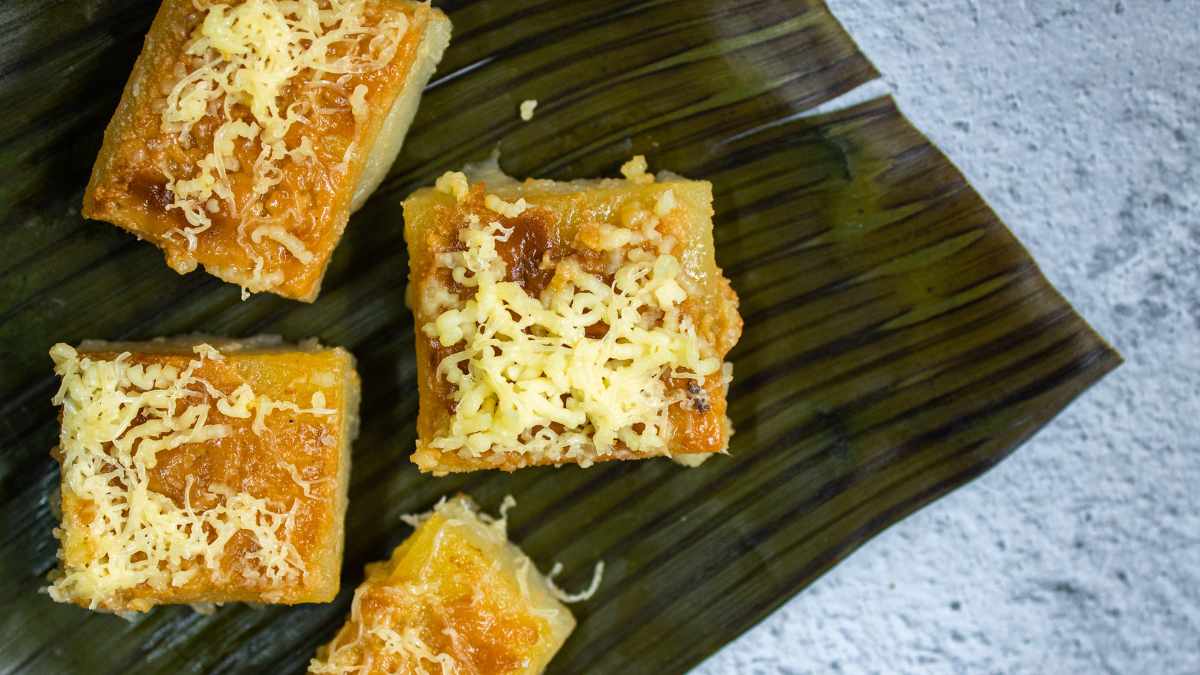Finding Cozy Comfort in Lola’s Creamy Cassava Cakes
Hello momshies! Today’s post is about why comfort food is so, well, comforting. I was making this cassava cake recipe the other day and was thinking about this while I baked this cassava cake recipe.
Cassava cake is a traditional and well-loved dessert in the Philippines. It is typically enjoyed as merienda, the between-meals snack time. Cassava cake is also a popular dish for gatherings and occasions, where families socialize over this simple treat.
The Cassava Cake in my Mind
Food plays such an important role in our childhood memories. Think back to your favorite family meals, birthday cakes, and homemade treats. Those flavors and smells transport us back to simpler, happier times in our lives.
When I think of childhood comfort food, one of the dishes that immediately come to mind are the endless array of kakanin that I grew up with, in this case- all the delicacies from cooking cassava (kamoteng kahoy) or what we call in the islands as “balinghoy” or buybuy. There’s an array of them such as sumang balinghoy, pichi pichi, or this cassava cake recipe. (Trivia: In our small province of Marinduque with 6 towns, Kamoteng kahoy has different names in different towns. In Mogpog where I hail from, it’s Balinghoy, in Boac it’s Karlubang, in Gasan it’s Buybuy. 🤷🏽♀️)
My Lola used to make this cassava cake recipe on special occasions and when it’s cassava season, steaming it to perfection in banana leaves. Making these is a family affair and aunts and uncles, with cousins to boot will pitch in with wrapping the suman (and a host of other cassava based desserts and merienda). As a child, the aroma of sugar, coconut, and cassava wafting from the kitchen instantly transported me to a different world, one filled with happiness and warmth. Almost Christmassy -if there ever is that word.
For me, a big part of relaxing as a mom is reconnecting with those comforting flavors from my childhood. That meant the cassava cake and a host of other native delicacies, courtesy of the wonderful women of the family. On special occasions when I was young, rice flour, coconut milk, and the cassava would magically turn into this melt-in-your mouth kakanin that filled our small kubo with the heavenly scent of cassava cake.
Nowadays, if you ask kids about their favorite childhood snacks, memories of cake are likely to emerge. Birthday parties, sleepovers, and weekends were punctuated by these sugary confections.
But what if one of those cakes was not like the others?
What if instead of flour, sugar, and eggs, it was made with cassava, a humble tuber as alien to the Philippines as cake once was?
What the Cassava Cake Tells Us
The story of cassava cake reveals a great deal about culture, tradition, and our colonial experience. What can one simple cassava cake tell us about culture and family? Plenty! Three big lessons:
First, food ties us to our roots. That cassava cake kept my Filipino heritage alive, and reminded me of home, no matter how far away I strayed. Flavor bridges distances, connecting us through taste across the generations.
Second, assimilation is a gradual blending. The cassava plant which, as mentioned, actually originated in South America but was brought over by the Spaniards, becoming deeply ingrained in Filipino cuisine. So ingrained that I was actually surprised that it’s not a native Philippine plant. Though it came from as far as Africa which never really had intersected with the Philippines at any point in our history. Traditions evolve while still staying true to themselves, as cultures mix and remix over time.
Finally, traditions endure when parents pass them to kids. I grew up never really cooking kakanin nor cassava cake, just observing the Lolas. and the Aunties, but I guess it stuck. You don’t learn to bake cassava cake in school or see it served at restaurants. It’s shared within the confines of a home kitchen, a binding ritual between parent and child. That feeling of comfort and continuity is what makes comfort food so comforting – it restores our sense of belonging in an unfamiliar world. And when children cook family recipes, a little bit of the “Filipino food heritage” lives on.
The next time you’re offered a comforting childhood treat, think of its story. Savor the history in its flavors, the roots clinging to tradition across time. Taste the hand that passed it down. In those sweet moments of tasted transcendence, souls connect and families are made.
Now I know that is a bit long-winded but I hope you enjoyed the side trip. If you’re here for the cassava cake recipe, please enjoy using the recipe below!
What is Balinghoy or Cassava
Cassava is a carbohydrate rich staple of West African cuisine. It’s high in calcium, phosphorus and fiber yet gluten free. The cassava plant is native to Brazil but also widely cultivated in parts of Africa and Asia, providing an essential source of calories for a billion people. Planters encouraged cassava because it thrived in poor soil and was drought-resistant. In Marinduque, they’re planted in the mou8ntains and sometimes used as a barrier plant. The young leaves are also sometimes cooked as ginataan.
Safely Preparing Fresh Cassava: A Guide for Beginners
This is a simple method for preparing fresh cassava. Start by donning a kitchen glove before handling cassava in case you get allergic reactions. Then begin removing both ends of the tuber. Then, use a sharp knife to make a shallow 2-3mm slit along the length of the cassava going around. Slide the knife between the skin and flesh to peel it off in one piece. Give yourself a prize if you are able to peel it in one go. Lol. Give the peeled cassava a good rinse under running water, removing any fibers or residue.
At this point, you have a few options depending on your recipe:
- For baking, boiling, Ginataang Balinghoy, or other whole treatments – Leave the cassava in chunks after peeling and rinsing.
- To grate – Pat the cassava dry and use a box grater or food processor attachment to grate it into a bowl. This is perfect for recipes like cassava cake. Squeeze out the moisture to remove the bitter aftertaste from the cassava. Some say that this is not necessary but I do it anyway.
- To freeze partially prepped – After peeling and rinsing, cut the cassava into 1/2 inch slices and seal in a freezer bag. You can then grate or dice as needed from frozen.
No matter which method you use, thoroughly washing the peeled cassava is key to removing any residual toxins. Always discard the soaking water too.
How to Make Cassava Cake Recipe

Steaming Versus Baking
The classic Filipino cassava cake recipe is made from simply combining cassava root, coconut milk, and condensed milk then steaming. This results in a denser and slightly more pudding-like consistency. It’s mildly sweet and milky in flavor. Nowadays. it’s more common to bake the cassava cake recipe. Baking allows for a lighter and fluffier texture compared to steaming. The addition of a caramel custard topping elevates the flavor profile. The caramelized sugar adds depth and complexity, while the custard provides a luxurious richness that complements the cassava’s mild sweetness.

Ingredients
- - 1 kilo grated cassava (squeezed)
- - 2 cups coconut milk
- - 1/2 can evaporated milk (360 ml preferably Alpine)
- - 3 pieces egg
- - 1/4 cup butter melted
- - 1/2 cup cheddar cheese grated
- - 1/2 cup condensed milk (160 ml preferably Alaska Blue)
- - 3/4 cup granulated white sugar
Topping ingredients
- - 2 tablespoons flour
- - 2 tablespoons sugar
- - 1/2 cup remaining condensed milk
- - 1/4 cup cheddar cheese grated
- - 2 cups coconut milk cream
Instructions
Batter:
- - In a bowl, mix together grated cassava, butter, 1/2 cup condensed milk, 1/2 cup evaporated milk, cheddar cheese, sugar, and 2 eggs until well combined.
- - Add 2 cups coconut milk and mix again.
Baking:
- - Grease a baking tray. Pour the batter up to 3/4 into the tray. Do not overfill as it will expand and takes too long to cook!
- - Preheat the oven to 350°F.
- -Once preheated,, bake the cassava cake for 1 hour or just until the top is no longer liquid. Remove from oven and set aside.
Topping:
- - In a saucepan, mix 2 tablespoons each of sugar and flour.
- - Stir in 1/2 cup condensed milk and 2 tablespoons cheese.
- - Pour in 2 cups coconut milk cream and stir for 10 minutes over heat until thickened.
Assembly:
- - Pour the topping over the baked cassava cake and spread evenly.
Glaze:
- - Separate the egg yolk from the egg white, reserving the egg white.
- - Use the egg white to brush or glaze the top of the cassava cake topping.
Broiling:
- - Turn the oven to broil mode and broil the cassava cake until the top turns light brown.
- - Garnish with extra grated cheese. Serve and enjoy!
Hope this cassava cake recipe helps, Momshies! Let me know of any other comforting recipes in your family worth passing on. And don’t forget to sign up for my Relax Lang Mom newsletter for more stories, recipes, and mom encouragement!
====
#cassava #filipinofood #foodheritage #culinaryroots #foodhistory #flavorjourney #traditionalrecipes #tastesoflife #dishstories #passingdownflavor #foodmemories #dishlegacies #recipesacrossgenerations #familymeals #cookingculture #foodways #culturethroughfood #memorymakingdishes


